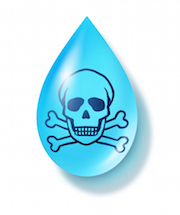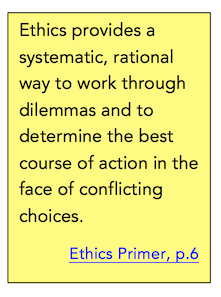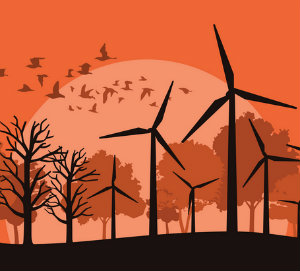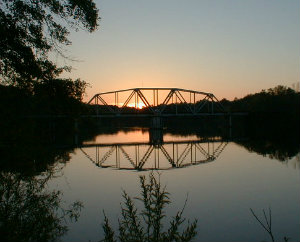Teaching Ethics Should Be a STEM Essential
A MiddleWeb Blog
 “We’ve been screaming about this since February [2014] and people, they’ve just blocked us out,” exclaimed an exasperated Melissa Mays, a resident of Flint, Michigan.
“We’ve been screaming about this since February [2014] and people, they’ve just blocked us out,” exclaimed an exasperated Melissa Mays, a resident of Flint, Michigan.
Mays was referencing a dangerous water pollution crisis in Flint, Michigan where some children are experiencing elevated levels of lead in their blood and the lead levels in some drinking water samples are so high they are defined as hazardous waste. The lead-laced water appeared after city officials decided to end a water supply contract with Detroit as a cost-saving measure and take water from the Flint River instead.
Lead poisoning in children causes developmental and behavioral problems, and, according to the Detroit Free Press, it took 16 months for Flint officials to take action. In at least three Flint elementary schools children have been drinking lead-contaminated water during those 16 months as have residents of homes throughout Flint.
The Detroit Free Press described this as a clear example of a trade-off: downgrading some services to save money vs. the risk of increasing health problems among the population. These are among the types of decisions that our students will one day confront as STEM professionals or in other capacities.
Think about the escalating crises your students will tackle as workers in this nation alone. It’s estimated that over 50,000 deaths in America each year are related to air pollution. Our students will deal with decisions involving food shortages, housing shortages, cloning, adapting to climate change, drones, availability and affordability of medicines, data chip implants, genetic testing, and hundreds more. Are they prepared to make those decisions ethically?
The shortfall in STEM ethics emphasis
A child’s earliest exposure to morals, values, and ethics happens in the family – where character first finds its roots. Exposure to culture and learning during the school years further shapes the child’s ethical outlook.
Jackie Gerstein in her post Teaching Ethics in the Age of Technology writes that teaching ethics in STEM fields is overdue. She explains,
Ethical decision-making should be included as a 21st century skill. . . we are living in the most complex era of human history.”
Gerstein goes on to point out that students have access to copious, often conflicting information. Technologies are emerging, being developed, advancing, and being disseminated at rates that the human mind often cannot comprehend.
Ethics studies can help students develop critical thinking skills; explore and evaluate real problems; make wise choices concerning technologies; and develop knowledge, skills, and judgement that they can use in their personal lives as well as in the workforce.

Perhaps that’s why Steele, Brew, and Beatty in The Tower Builders: A Consideration of STEM, STSE and Ethics in Science Education make this jolting statement:
STEM teaching and learning . . . could inadvertently fall far short of its promise to provide ethically grounded answers to pressing global concerns without an ethical framework to guide it.”
The National Science Foundation would also like to see the ethics issue become front and center in STEM fields. This organization has funded research to explore “What constitutes ethical STEM research and practice?” This funding focused on practices that help to establish and maintain ethical cultures and how these practices can be transferred. As welcome as this focus is, the funding targets higher education and, as it stands now, will probably have little impact on K-12 STEM work.
That highlights the need for K-12 teachers to work with students, particularly in STEM areas, to help them develop a structure for ethical decision-making. So, are our resilient STEM teachers up for yet another crucial task? Before our next generation of decision-makers hit the workforce, can STEM teachers help them with a process for making ethical decisions?
How do we teach ethics in STEM?

Some types of real-world problems lend themselves readily to ethical deliberations. Proposed environmental solutions for cleaner air, for example, resulted in push-back from some industries that faced investing more money in equipment, and even from some citizens who feared a rise in price for the products these industries produce. So how do you lead your students through a productive discussion of these issues?
In my search for answers to that question I located a free Ethics Primer from the Northwest Association for Biomedical Research (downloadable as a PDF). This publication strongly recommends that the study of ethics begin through exploring a case study or a scenario.
A STEM lesson provides a perfect kickoff for an ethics discussion, since a scenario generally accompanies the real-world problem kids are trying to solve. From there, ethics principles and practices can be built naturally into the lesson.

How might students approach this conflict? They might use questions such as these:
- What background information do we know about this issue?
- Who or what is affected by this issue?
- What benefits might result from our solution?
- What harm could result from our solution?
- Which results will create the greatest good?
In reaching their decision, students will often find it useful to apply these ethical principles mentioned in the Primer.
- Respect individuals and their right to make independent choices.
- Be of benefit: in other words, do good and not harm.
- Be just: treat others equitably and distribute benefits/burdens fairly.
- Care: employ compassion and solutions that will create the greatest good.
What can STEM educators do?

I’m hoping that in many schools and classrooms, the concept of public and professional ethics is already being explicitly taught within the STEM context. (Notice that ethics and character education are not synonymous.) If I’m on target, would you comment below and let readers know how that’s happening?



































Thank you, Anne, for addressing such an important component of what STEM education should consider. Ethical considerations is one of the Engineering Habits of Mind and must be given its due along with Creativity, Communication, Collaboration, Optimism and Systems Thinking. It is one thing to encourage a student to brainstorm ideas to solve a real world problem and another entirely to consider what are the consequences of that solution. Does the end justify the means? You have done an excellent job in spelling out what ethical considerations means and how important it is to be included in a comprehensive STEM education.
I may add that this is another obvious connection for the arts and/or humanities. The arts aid these critical thinking skills and promote an investigation of what failure can bring to success. In addition, Socratic discussions are fundamental to solving a real world problem and considering the consequences. In our Capitalistic world, usually we think of will it solve a problem and make money for someone? We don’t consider the consequences and there are examples of that everywhere — oil exploration, poor bridge or building construction, water contamination, etc. Even certain toys, because of their design or components, have had consequences for children. Many of these examples were done in haste without the needed exploration and research, giving credence to their existence and thus, the poor outcomes.
So without being too political—this is an issue for all political parties—we need to address the future of our world and the impact of what we do or create may have. It will take some more time and yes, I know that is an issue with all of the needs in the classroom, but creating ethical and responsible thinkers is paramount to quality STEM/STEAM education and creating a STEM literate citizenry for the future.
Thank you Anne!
Ruth Catchen
http://www.stemartseffect.com/
Thank you, Ruth! I appreciate those insightful comments and thoughts. I share your belief that all subjects reaching a common way of incorporating ethics into the curriculum would be so valuable for our students and our nation. Often topics around which all could collaborate would happen – environmental issues, for example. At other times, language arts could teach about ethics of plagiarism, and that could carry over into science and STEM ethics as well. It would take some planning and deliberateness, but would be well worth it!
Thanks for including that link to your website! What a great site!
Very well written article… thanks. Keep writing and I will keep learning!
I appreciate that, Candace. I plan to keep writing, so please keep on checking in and letting me know what kinds of topics are most useful.
Very well written
I am teaching a capstone research class this year. I hope to incorporate the idea of STEM ethics in the students’ research. I’d be interested to see more models of questions to ask and/or rubrics to use when evaluating an innovation and its respect to ethics.
The Ethics Primer at http://bit.ly/1L1HU4y would be a good resource for your, Jinafer. A model I sometimes use for analyzing/evaluating the impact of an innovation is the Concerns-Based Adoption Model (CBAM). You can access a good bit of information about it at SEDL (www.sedl.org/cbam/). Hope those will be of some help to you!
What a profound statement:
“Our students will deal with decisions involving food shortages, housing shortages, cloning, adapting to climate change, drones, availability and affordability of medicines, data chip implants, genetic testing, and hundreds more. Are they prepared to make those decisions ethically?”
The overall question is how can we teach the future to our students when we don’t even know what the future holds exactly?” Your article is a great place to start for teachers as we grapple with this concern of ethics. As some schools are only scratching the surface of STEM education there are many others, I am sure, that are not embracing this critical educational reform methodology. I will share this article with my other grade level teachers in our weekly planning meeting with hopes to spur on the motivation that I have encountered herein. Please keep writing and sharing with us!
Thank you!
Thanks so much, Colette. I hope that your teachers see the critical need to provide our kids with a sense of ethics and sound decision-making basics. You’re right – this is SO critical to the future of citizens and the nation.
Totally agree ethics are a core essential for all teaching.
Glad you think so, Chris! I certainly feel that way. Just think about the use of the cell phone as an example of a technology that can be ethically dissected.